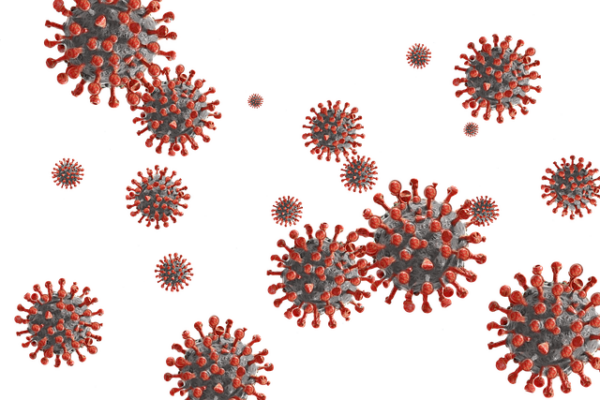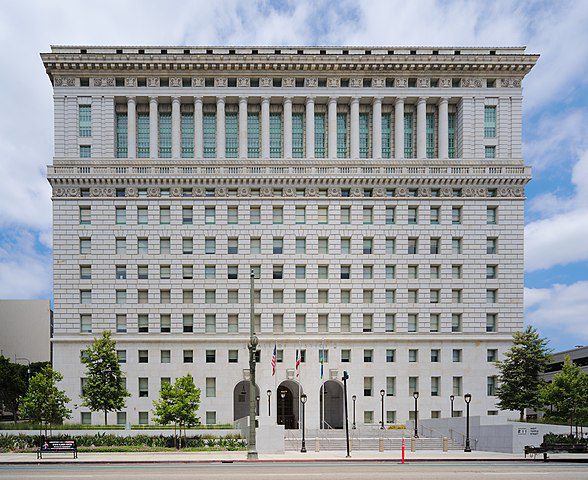One day after moving into the federal government’s “high” COVID-19 activity category, Los Angeles County logged 3,756 new infections Friday, along with 17 more virus-related deaths.
The new cases lifted the county’s cumulative total from throughout the pandemic to 3,577,685. Health officials have stressed the actual number of cases in the county is much higher than reported each day, because many people take at-home tests and don’t report the results, or they do not get tested at all.
The 17 new deaths gave the county an overall virus-related death toll of 34,296. The seven-day average daily rate of people testing positive for the virus in the county was 12.1% as of Friday.
According to state figures, there were 1,243 COVID-positive patients in county hospitals as of Friday, down from 1,306 on Thursday. Of those patients, 129 were being treated in intensive care units, down from 132 a day earlier.
The county on Thursday moved from the U.S. Centers for Disease Control and Prevention’s “medium” COVID activity category for “high.” The move came when the county’s average rate of new infections rose to 258 per 100,000 people — well above the threshold of 200 per 100,000.
County Public Health Director Barbara Ferrer said the move will not trigger a return to any lockdowns or business closures that were imposed at the height of the pandemic. But she warned that being in the “high” category means the virus is rampant in the area, and the odds of being exposed are growing.
“We are not asking people to curtail their activities, to avoid activities or to shut down any activities,” Ferrer said. “We’re letting people know that the risk is higher with elevated transmission, and because this is having an impact on our health care system and our vulnerable residents, it’s time to layer in sensible protections.”
She noted that with the current infection rate, there’s an 80% to 90% chance that at least one person is infected with the virus at an event or gathering of 200 people.
Ferrer has said the county will reimpose an indoor mask mandate if it remains in the “high” category and if the county’s virus-related hospitalization numbers reach two thresholds:
— if the rate of daily hospital admissions tops 10 per 100,000 residents; and
— if the percent of staffed hospital beds occupied by COVID patients tops 10%.
The county has already surpassed the first threshold, with the rate of daily hospital admissions already at 14.8 per 100,000 residents as of Thursday. The percent of hospital beds occupied by COVID patients was 6.9% as of Thursday, still below the 10% threshold.
Ferrer said the health department’s initial projections showed that the hospital bed percentage would reach 10% by Dec. 20, but she said admission numbers appear to have leveled off in the past three days, meaning it may be longer before the figure reaches 10% — if at all.
“We’re not sure that we’ll get there,” she said.
“We’re going to be hopeful that in fact we’re starting to see perhaps some leveling in the need for people to be treated at hospitals,” Ferrer told reporters.
Mask wearing, however, continues to be “strongly recommended” by the county at indoor public settings. But Ferrer said that even absent a mandate, residents should start wearing them.
“We all need to wear our masks now,” she said, again citing multiple studies showing their effectiveness in preventing spread. “We’ve reached a threshold … where there’s just too much transmission, and it’s creating a lot of risk.”
Masks are still required indoors at health-care and congregate-care facilities, for anyone exposed to the virus in the past 10 days, and at businesses where they are required by the owner.
Ferrer said Thursday the county reported an average of 3,800 new infections per day over the past seven days, a 40% increase from the previous week, when 2,700 new cases per day were reported.
Daily virus-related hospital admissions jumped by 9% over that week, and daily death reports rose from eight per day to 12.
“With a higher number of cases, we see more transmission,” Ferrer said. “This means that you’re chance of catching COVID during your routine activities — grocery shopping, eating out, running errands, going to work — will increase. If you’re going to an event such as a concert or a large Christmas party, there is now a higher likelihood that one or more persons at the event is infected. They could unknowingly infect you, and you in turn could unknowingly infect your friends and coworkers or your family.”







